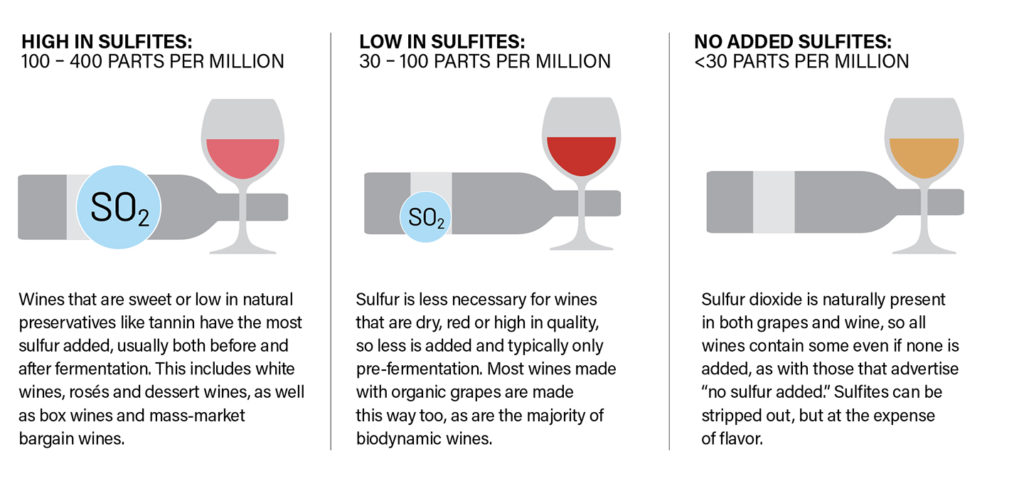The use of sulfur dioxide, or “sulfites,” in wine is a hot topic these days, and a topic with widespread misinformation.
The confusion is partly due to misleading warning labels required for wines at far lower levels mandated for foods containing sulfites, giving the impression that sulfites are more dangerous than they really are. However, there are two complicating factors that are often overlooked in simplistic debates about sulfites.
First, sulfur dioxide is not simply an additive, but also present in fresh fruit at low levels, and also a natural by-product of fermentation. Second, sulfur dioxide can be used by winemakers in two ways — before or after fermentation — with vastly different results.
Almost all vintners, including most organic practitioners, add a small amount of sulfur dioxide to grapes before fermentation to improve winemaking hygiene. This has been an essential winemaking practice since at least the days of Ancient Greece, originally through flame purification of fermentation vessels.
It remains so to this day because without a sulfur addition at this stage wine is dramatically destabilized, allowing microbiological activity and oxidation to shorten its shelf life. Pre-fermentation sulfur addition does increase a wine’s final sulfur content, but not by much since most settles out as sediment.
However, it became common in the 19th and 20th centuries for vintners to add additional sulfur dioxide to the finished wine after fermentation, as a preservative, to fend off oxidation and prevent refermentation in wines that contain sugar. When added to wine rather than to grapes, sulfites remain present at much higher levels, closer to those found in foods like sour cream, pickles or dried fruit.
This practice has remained the norm for certain categories and styles, most notably cheap mass-market wines, and also lightweight rosés and sweeter whites, due to their greater susceptibility to spoilage.

Contains Sulfites: The Warning Label That Cried Wolf
Nowadays, greater awareness of food safety and suspicion of chemical additives has led to an international regime of warning labels on wine that flag sulfite content.
Sadly, though, the agri-business lobby has succeeded in lowering the threshold at which warning labels must be used to the point of meaninglessness. Rather than simply flagging the highest sulfite levels produced when used as an industrial-scale preservative, the warning stickers appear on 99.9% of all wines, including those to which no sulfur has been added at all.
Marnie Old is one of the country’s leading wine educators. Formerly the director of wine studies for Manhattan’s French Culinary Institute, she is best known for her visually engaging books published by DK – such as Wine: A Tasting Course. Marnie currently serves as director of vinlightenment for Boisset Collection. Read her recent piece, Warm Days, Cool Nights: Why They Matter for Wine.




